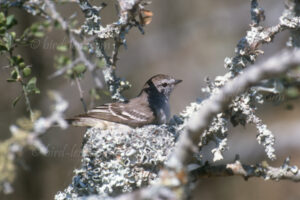 In a mesothermal valley with a well-established cactus vegetation in Bolivia, where the sun paints the sky in shades of orange and pink, a pair of Mouse-colored Tyrannulets (Phaeomyias murina) have found a remarkable breeding site. Nestled in the protective branches of a thorn bush, her tiny nest houses 5 eggs that will soon be warmed for hatching. The dry environment presents a challenge, but these resilient birds had adapted to the harsh beauty of their surroundings.
In a mesothermal valley with a well-established cactus vegetation in Bolivia, where the sun paints the sky in shades of orange and pink, a pair of Mouse-colored Tyrannulets (Phaeomyias murina) have found a remarkable breeding site. Nestled in the protective branches of a thorn bush, her tiny nest houses 5 eggs that will soon be warmed for hatching. The dry environment presents a challenge, but these resilient birds had adapted to the harsh beauty of their surroundings.
As the sun rises higher in the sky, casting intense rays on the cactus-covered landscape, the female mouse-colored tyrannulet busily tends to her nest. The heat becomes increasingly noticeable in the morning and the air shimmers with relentless dryness. In order to protect her eggs from the rising temperatures, the mother bird shows unusual behavior: she begins to pant.
I take the opportunity to explore the behavior of the Mouse-colored Tyrannulet’s nest hidden among the thorns. This may provide a rare opportunity to observe how these small birds cope with the unrelenting heat. I’ll stay for a while and photograph this spectacle for quite some time.
Using miniature temperature loggers and discrete cameras, scientists are increasingly documenting the panting behavior of small birds such as the Mouse-colored Tyrannulet. The rhythmic rise and fall of her chest has been captured in minute detail, demonstrating a finely tuned adaptation to the challenges of the scorching desert climate.
A scientific team found that panting not only helps regulate the bird’s body temperature, but also creates a microclimate in the nest. As the mother expels warm air through her open beak, the process of evaporative cooling helps maintain a slightly lowered temperature for the developing eggs. The thorn bush with its prickly branches provided shade and shelter, but the panting proved to be a crucial thermal difference. As the research progressed, scientists also marveled at the Mouse-colored Tyrannulet’s resilience. The small bird with its subtle gray plumage seemed perfectly suited to surviving in the cactus landscape and also raising young. The nest, carefully constructed from plant fibers and spider silk, was a testament to these birds’ ingenuity in creating microhabitat in the challenging desert-like environment.
In order to meet the growing demand for top images of the rarer species of Palaearctic Bird-lens.com has specifically made trips to remote places. Additionally every chance is used, if a rare bird is around the homeground. This to do everything to ensure excellent photos of the Birds of the Western Palearctic . The yield of pictures also of rare Western Palaearctic birds is very good. There are other nice images of birds, that you will find behind the tab “Picture Shop“. Just give a notice if you need a picture of a bird which is not online.